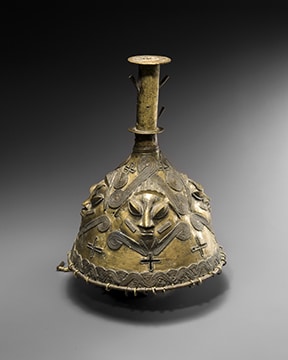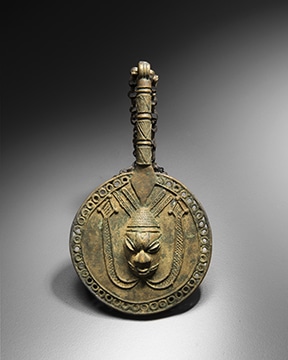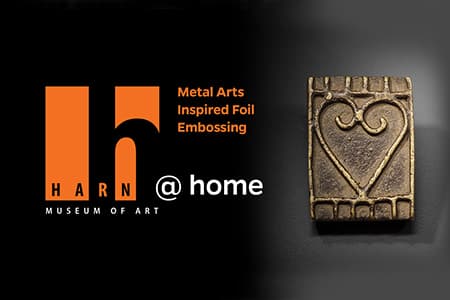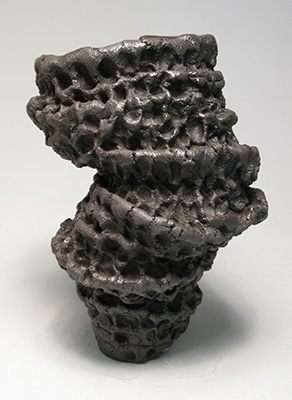The Harn docents have always delighted and challenged me with their insightful responses to art works on view in our exhibitions. They see what I can’t see, and in many cases their probing questions flummox me, and call for further investigation and re-evaluation of our interpretive materials. A case in point was a recent docent training talk on the current exhibition, Peace Power and Prestige, Metal Arts in Africa. The pre-recorded talk allowed no immediate feedback but the docents’ questions rolled in soon thereafter. One of the questions concerned the many works with faces. What did they mean, those faces on staffs, bracelets, bells, anklets and other objects? Many of these art works are brass objects made by Yoruba artists of Nigeria, and particularly those for the Ògbóni/Òsùgbó society. There are faces on every object connected to the sacred rites of Ògbóni/Òsùgbó featured in the exhibition. These visages are prominently placed, either in the center panel of the object, or on figural staffs of office called edan. (Fig 1 and 2) With disproportionately large features, particularly their bulging eyes, they are not faces that you can ignore. They are insistent, they are watchful, and they exude power.



To understand these forceful and alluring countenances, you have to know about the Ògbóni/Òsùgbó society, its mission and its members. The mission of the dual-named society is the same: to ensure and maintain peace, harmony, well-being and justice, by upholding the laws of Mother Earth, Ilé. Wielding political, judicial and religious powers, the society functions as a town council, a court, and electoral college that selected kings and dethroned them when deemed unfit or corrupt. These lofty roles required that its members, were the wisest elder men and women of the community. The bearded faces on Ògbóni/Òsùgbó ritual implements, depicting both male and female members, signify their maturity, knowledge and wisdom (Fig. 3). Their expressions reveal they are imperturbable, dignified and serene, and convey their composure and self-discipline.

Thinking of the Yoruba concept of ojú, or face, as an agent of change for peace and justice, I considered how it echoes across time, space and cultural contexts. To solve problems and to effect change we must face them, and can only do so by humanizing them—we must put a face on them –to communicate and find answers. As James Baldwin so wisely reminds us, “not everything we face can be changed, but nothing can be changed until we face it.”




